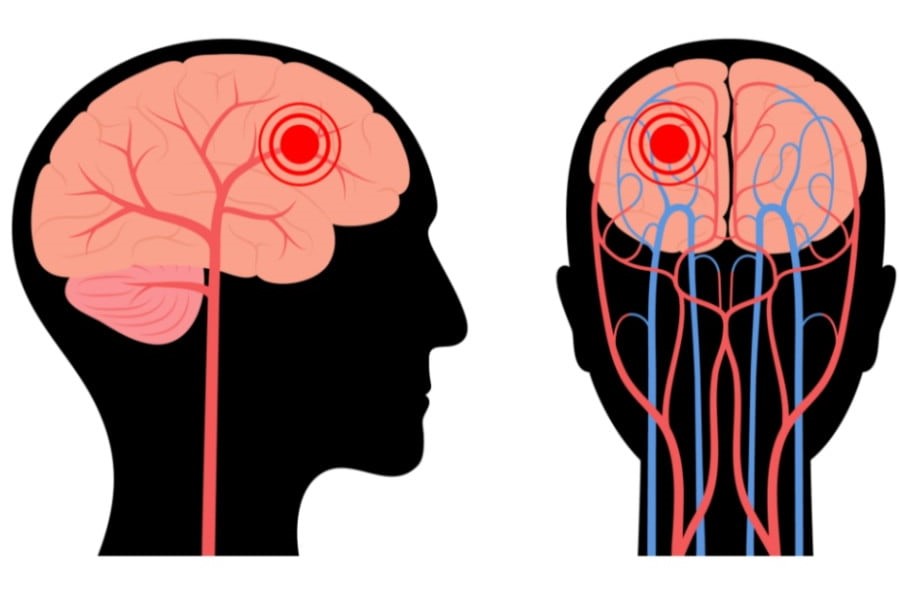
Transient ischaemic attack (TIA): what it is and how to deal with it
A transient ischaemic attack (TIA stands for transient ischaemic attack) is characterised by a temporary interruption or reduction in the blood supply to the brain
It lasts a few minutes and generally causes no permanent damage.
It occurs when the passage of blood and oxygen in the arteries carrying blood to the brain is obstructed either by a small solid blood clot (embolus or clot) or by a narrowing (stenosis) of the blood vessels due to cholesterol plaques (atherosclerotic).
This condition causes the brain to suffer (ischaemia), which, however, lasts only a few minutes, usually lasting an hour at most.
If it lasts longer than 24 hours, it is called a stroke.
It manifests itself with problems such as difficulty speaking and understanding, sudden weakness, facial or limb paralysis, and dizziness. These symptoms are similar to those of a stroke, but temporary.
It is no coincidence that a transient ischaemic attack (TIA) is called a mini-stroke.
What is transient ischaemic attack (TIA)?
QUALITY AED? VISIT THE ZOLL BOOTH AT EMERGENCY EXPO
The transient ischaemic attack is also called mini-stroke because its causes and symptoms are similar to those of the so-called stroke or apoplexy, also referred to as a stroke.
It is a sudden and temporary (a few minutes or a few hours) cerebrovascular problem caused by an alteration in blood flow that hinders the normal blood supply to the brain.
The suffering to which the brain is exposed is short-lived and manifests itself in motor, language or sensory problems that last until normal blood function is restored without damage.
It should be pointed out, however, that a TIA, transient ischaemia (lack of blood supply), is often a warning preceding a major episode and thus a stroke.
Generally, one in three people who suffer a transient ischaemic attack will have a stroke within a year.
What are the causes of a transient ischaemic attack (TIA)?
The disease results from a disruption of the blood flow that brings oxygen and nutrition to the brain.
There are generally two causes: TIA can be caused by a clot in a blood vessel, usually an artery, that supplies blood to the brain.
The clot can also form elsewhere, in the heart for example, and move through the blood system to the brain.
Similarly, the passage of blood can be blocked by narrowing of the blood vessels caused by the accumulation of fat (cholesterol) on the artery walls, which either reduces flow or promotes clot formation.
Transient ischaemic attack is generally associated with other conditions such as hypertension, diabetes, high cholesterol (hypercholesterolaemia), smoking, alcohol abuse and use of the contraceptive pill.
What are the symptoms of a transient ischaemic attack (TIA)?
Symptoms of transient ischaemia last a few minutes, usually no more than an hour (over 24 hours is called a stroke) and include:
- Difficulty speaking (aphasia) and understanding the speech of others.
- Numbness or temporary paralysis of one side of the body, affecting the face, arms and legs (hemiparesis).
- Decreased sensitivity (hypoesthesia).
- Visual disturbance with double vision (adipopia), blurred vision or blindness.
- Difficulty moving, loss of balance, incoordination, dizziness.
Read Also:
Emergency Live Even More…Live: Download The New Free App Of Your Newspaper For IOS And Android
Defibrillator: What It Is, How It Works, Price, Voltage, Manual And External
The Patient’s ECG: How To Read An Electrocardiogram In A Simple Way
Signs And Symptoms Of Sudden Cardiac Arrest: How To Tell If Someone Needs CPR
Ischaemic Heart Disease: Chronic, Definition, Symptoms, Consequences
Benedikt Syndrome: Causes, Symptoms, Diagnosis And Treatment Of This Stroke


